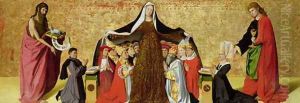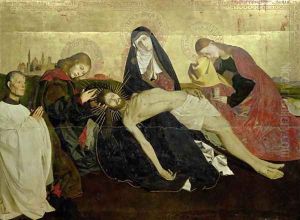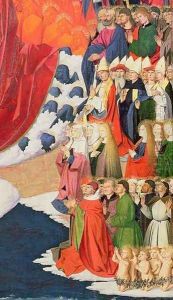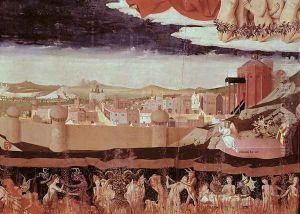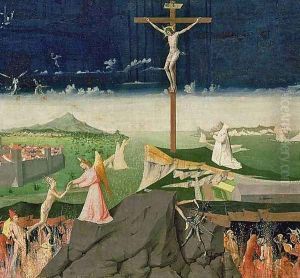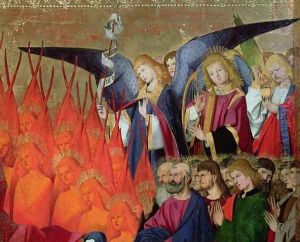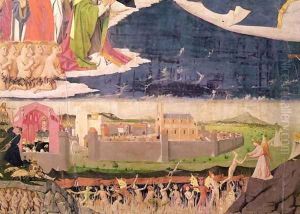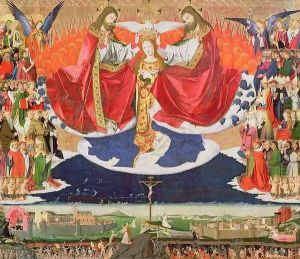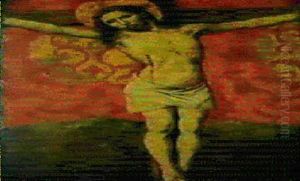Enguerrand Quarton Paintings
Enguerrand Quarton was a French painter and manuscript illuminator whose work is considered among the most significant of the 15th century in Europe. Though details about his early life remain scarce, it is believed that Quarton was active primarily in the regions of Avignon and Provence. His art reflects the transition from the International Gothic style to the early Renaissance, showcasing both intricate detail and a growing interest in perspective and volume.
Quarton is best known for two masterpieces that have survived: 'The Coronation of the Virgin', painted in 1452-1453 for the Carthusian monastery of Villeneuve-lès-Avignon, and 'The Pietà of Villeneuve-lès-Avignon', painted around 1455. The 'Coronation of the Virgin' is especially noted for its celestial setting and the intricate details of the figures populating the scene, revealing Quarton's deep understanding of theological themes and his ability to translate them into visual form. The 'Pietà', on the other hand, is celebrated for its emotional depth and the realistic portrayal of grief.
Quarton's work is characterized by its vivid coloration, precise detail, and the integration of architectural elements that suggest a keen awareness of the emerging principles of perspective. These qualities, combined with his unique ability to convey complex theological concepts through imagery, make his paintings a valuable source for understanding the spiritual and cultural milieu of 15th-century France.
Despite his significant contributions to the art of his time, much about Quarton's life and the extent of his oeuvre remains unknown. Records suggest that he was commissioned by prominent ecclesiastical patrons, indicating his reputation during his lifetime. After his death, however, Quarton's influence waned, and he was largely forgotten until the 19th century, when interest in his work was revived by art historians. Today, Enguerrand Quarton is celebrated not only for his technical skill and innovative approach to composition but also for his profound impact on the development of French painting and the transition to the Renaissance style.
